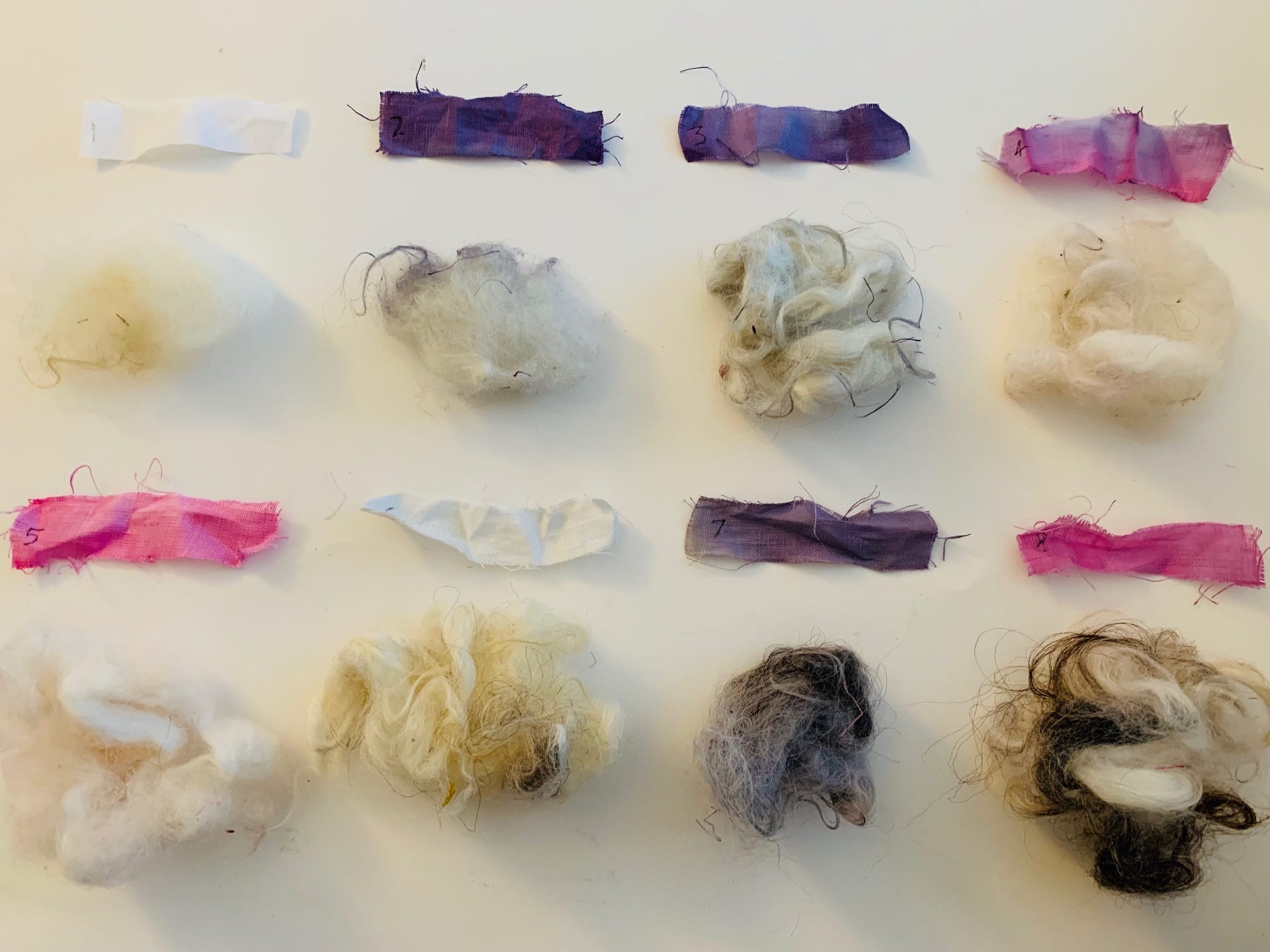NATURAL DYE LAB REPORT
- Natural Material Used
For this natural dye lab, I decided to use blueberries to make a natural purple dye. I used cotton fibers and wool to test out the natural blueberry dye I made.
- Predictions
I knew that my natural blueberry dye will create a purple dye when using the cotton fibers and wool after doing research on what fruits or vegetables I could use. I predicted that when introducing mordants to the natural dye it would cause color changes as it would change the pH solutions. I also predicted that the greater amount of water there was it would cause the dye to be diluted meaning that the cotton fibers or wool would have to be kept in the natural dye for a longer period of time.
- Process
I first decided to make the natural dye. I chose blueberries to make a natural purple dye. After washing the blueberries, I filled a pot about halfway with water and boiled them for about an hour. I seperated 10 percent of the wool to be kept as the unwashed/control sample. I then proceeded to wash the wool with a small amount of detergent. I noticed the texture of the wool changed after stripping out the oils. After 24 hours of letting the wool dry, I proceeded to move onto the actual dyeing portion of the lab. To keep myself organized I divided the wool and cotton fibers into 8 separate containers and labeled each cotton fiber with a number. I then went onto follow the steps of creating the mordants and soaking the cotton fibers and wool into for about 30 minutes. For my mystery mordant I decided to try out lemon juice to see if adding acidity to the solution would cause any dramatic color changes. After letting them soak in the mordant , I proceeded to wash the cotton and wool and letting them dry for about 2 days before looking at the final results of the natural dye mixed with mordants.
- Results
Table 1: Wool Fiber Results
| Control Samples | Experimental Samples | ||||
| Undyed Sample | Dyed + washed with water | Alum | Tartaric Acid | Soda Ash | Iron |
| Observations: | pH 6.5
– |
pH 3
– |
pH 3.4
– |
pH 11.3
– |
pH 5.7
– |
Mystery Mordant Lemon Juice: – pH 2
Table 2: Cotton Fiber Results
| Control Samples | Experimental Samples | ||||
| Undyed Sample | Dyed + washed with water | Alum | Tartaric Acid | Soda Ash | Iron |
| Observations: | pH 6.5
Purple |
pH3 Lavender |
pH3.4
Pink |
pH 11.3
– |
pH 5.7
Purple |
Mystery Mordant Lemon Juice: Pink pH 2
I observed after the natural dye was introduced that the natural colors coming from the cotton fibers and wool transitioned into a purple color. I noticed drastic changes when introducing the mordants. At the molecular level the pH levels are changing into more basic or acidic which is causing the purple to become darker or lighter or even more reddish I noticed that especially when adding the mystery mordant of lemon juice which is known for its high acidity that it turned the purple dye into a more reddish pink color.
- Conclusions and Discussion
The process of natural dye was a new experience for me of thinking of beyond just the sustainability aspect of using natural materials to create color. It made me think of “ integrat[ing] [oursevles]into a larger web of organic relationships” as stated by Sandor Katz in Countertop culture. Our culture has especially been thrown into a world of fast fashion due to epidemic of following the latest trends. This results us into us having a disconnect with the clothing that we are buying and wearing. All we can usually tell is that our clothing is by the tag that it is being mass produced by factories such as the ones in China or Indonesia.
Katz also touches upon on how neccesity drives innovation and this made me realize that we may have to depend on natural dyes in the future to dye all our clothes as we may lose access to the things to create the dyes that we are using now. After doing this lab, it made me realize why fashion labels show reluctancy in using natural dyes despite, it being more sustainable. Natural dyes may not always create the best results in terms of color and vibrancy. However, as there is a greater need/demand for sustainable products in the market the clothing industry may turn to natural dyes as a way to make a better future for fashion.
https://www.thesunmagazine.org/issues/413/countertop-culture

